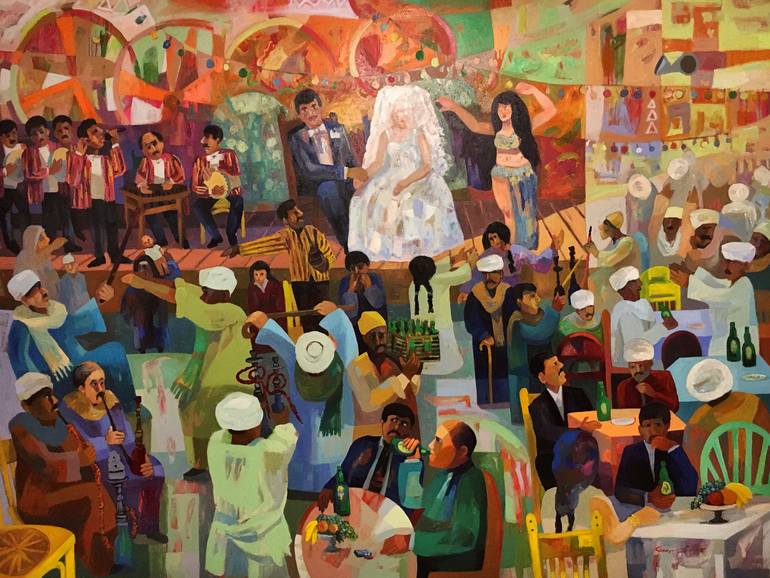
When one usually thinks of Egypt, they immediately resort to images of the Pyramids, ancient Egyptian history and the pharaohs that reigned. Folklore, however, is also very much a part of the Egyptian identity – so much so that there are still so many phrases, sayings, and elements of Egyptian folklore that have been passed down through generations and are still alive in our everyday.
The richness of the Egyptian folklore culture stands as a testament to modern-day Egypt in a variety of aspects – from well-known proverbs such as ‘Ein Kan Habibak Asal, Matelhasoush Kolo’ (If Your Love is Honey, Don’t Eat it all), to stories such as ‘El Nadaha’ (The Wailing Woman) and even the colorful traditional dress of rural Egypt. All of these elements, and so much more, have been used as a source of inspiration in a variety of ways- which brings us to the use of folkloric elements in contemporary Egyptian art.
The art scene in Egypt is vast and diverse, and local contemporary artists range in style. That being said, there are a number of local artists who resort to folkloric elements in our culture as a source of inspiration for their artwork. Usually, artists who incorporate folkloric elements into their artwork all have a similar use of color and shapes – however, both established as well as younger artists each interpret these folkloric elements in their own unique way. In any case, the resulting artworks are truly rich in Egyptian identity, and beautifully portray our wonderful culture.
Helmi El Touni
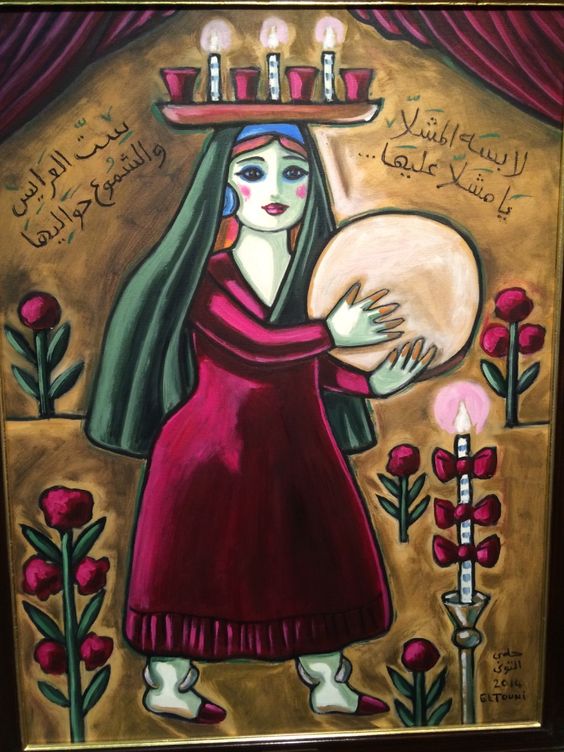
A well-known Egyptian artist, Helmi El Touni is widely known for his folkloric art. Most of El-Touni’s artwork centers on female figures, with the occasional inclusion of specific symbols or motifs such as a fish to symbolize fertility or the hoopoe bird to symbolize shrewdness. He has created a style in his artwork which is so distinguishably his, with heavy kohl-eyed female figures who always seem to be at the center of each piece. His pieces usually always revolve around some kind of a cultural theme.
Ibrahim El Tanbouli

Ibrahim El Tanbouli is an Alexandrian-born painter and sculptor who has exhibited his work globally. His artworks are uniquely devised with a heavy influence of folkloric Egyptian elements. His paintings usually depict everyday scenes of rural Egyptian life, consisting of a number of figures altogether creating a seemingly lively scene. El Tanbouli is known for his wonderful compositions, as well as his complimentary use of colors.
Hassan El Shark
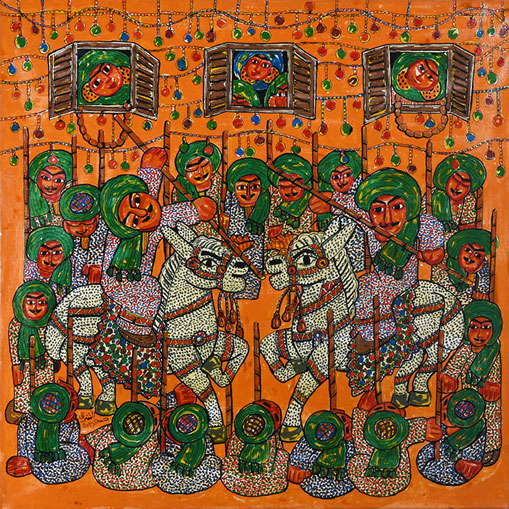
Hassan El Shark is a remarkable self-taught Egyptian artist who originally started painting using everyday natural materials he found around him. Having been brought up in a small village in Minya, his upbringing heavily influences his work. Using bright colors and distinct geometric shapes to construct his pieces, his work is a vibrant portrayal of rural life in Egypt showcasing various types of figures – from women carrying jars on their heads to horse-riding mustached men. El Shark has also been known to use the famous palm symbol which is known to be traditionally used in Egypt as a way to ward off evil spirits.
Abdel Fattah El Badry
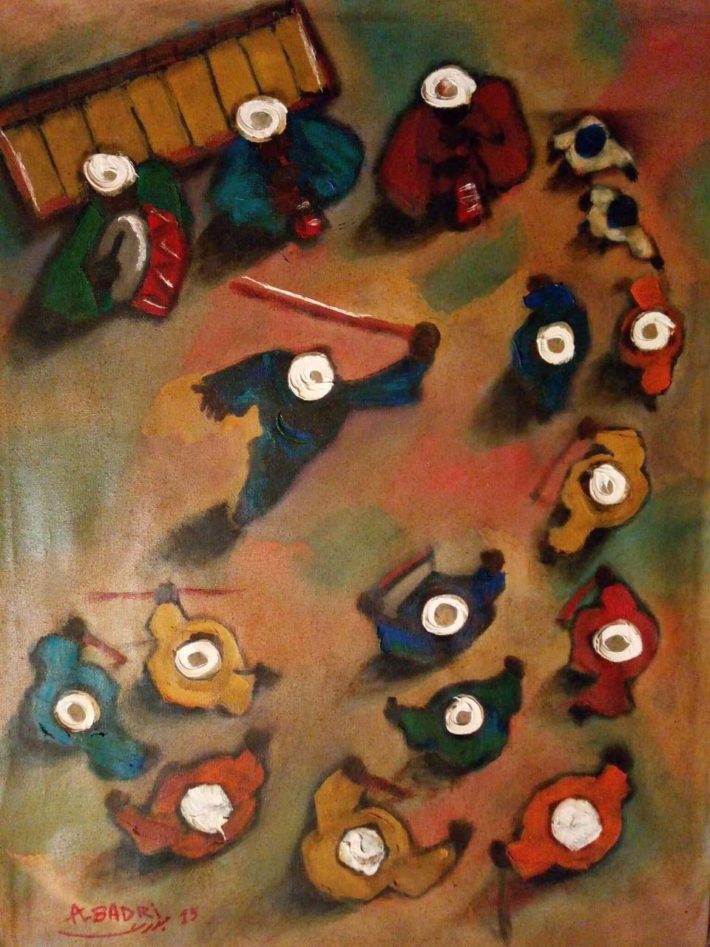
An avid admirer of folk dancing and rural Egyptian life, Abdel Fattah El Badry is known for his various depictions of folkloric scenes in his artwork. His style varies in shape, form, and color but he always tends to go towards a minimalist aesthetic. His artwork very interestingly sheds light on rural life, from scenes of men stick dancing to those of women partaking in a village celebration. El Badry occasionally also paints scenes of the Nile, and an interesting element to his work is his unique use of various angles.
Mohamed Abou ElWafa
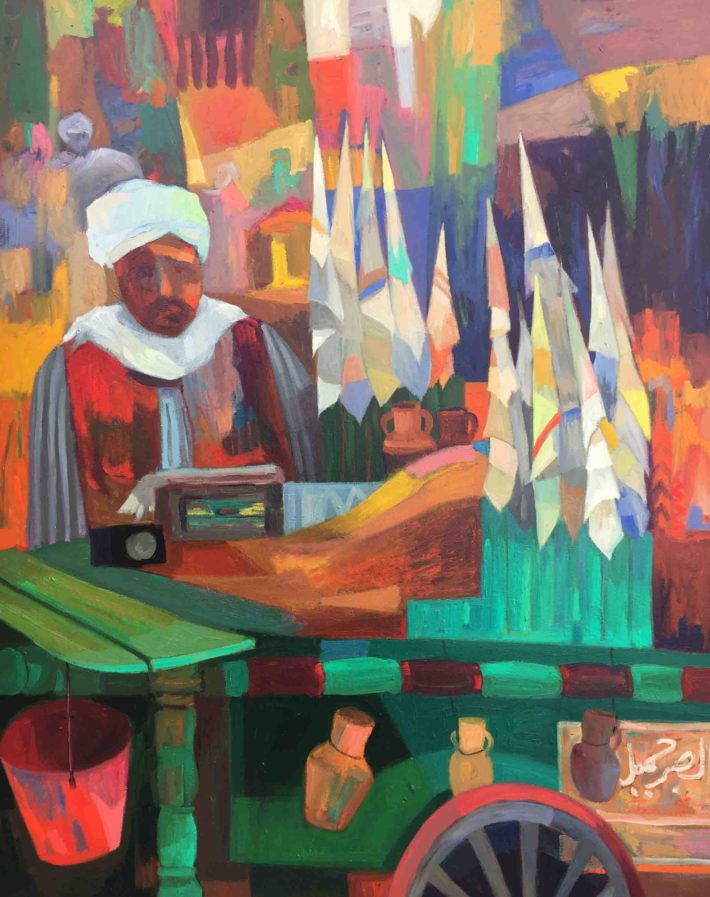
From a younger generation of artists, Mohamed Abou Elwafa may not be as well established as his fellow artists on this list, however he has grown to be well recognized for his unique style of art. Abou Elwafa implements elements of Egyptian rural life and traditions within his abstract pieces of work. He very distinctly uses cubist elements within his framework, in combination with abstraction and hints of realism in his depictions of mundane everyday scenes. His use of color is also noteworthy in that he keeps his palette rather dark toned, tending to lean more towards the colder side. His work has been highly regarded on both a local and global scale.
*Featured image painting by Hassan El Shark, courtesy of TAM.Gallery



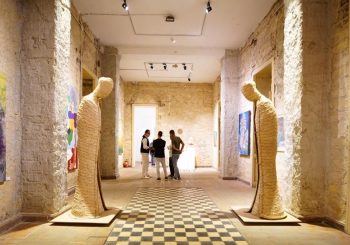
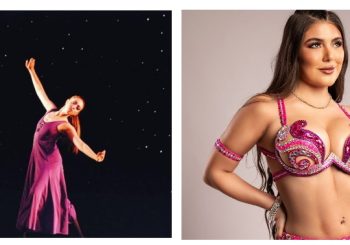

Comment (1)
[…] SOURCE: EGYPTIAN STREETS […]